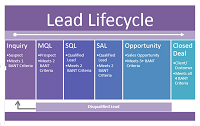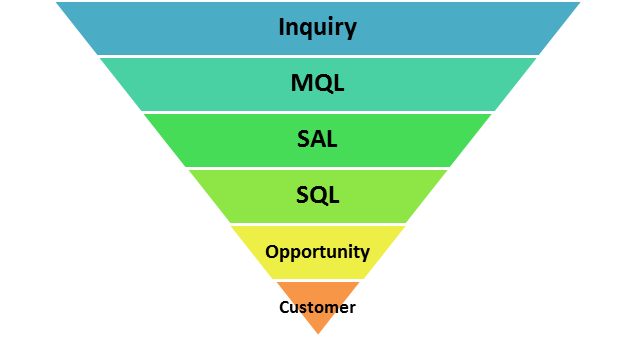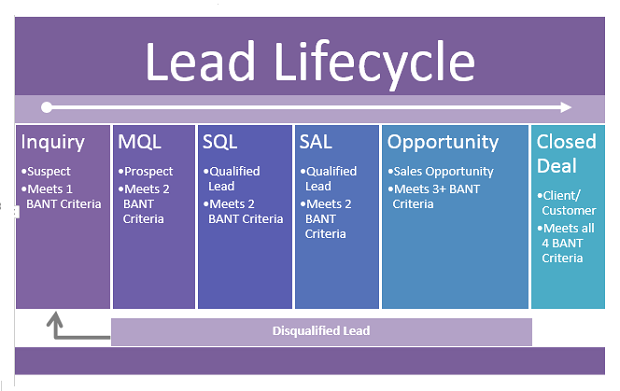Salesforce is a CRM or Customer Relationship Management tool and as such, its primary use is to manage the relationship between a business and their customers. Prior to consumers or businesses becoming customers, however they start out as potential leads. In this post are the basics of how to utilize Salesforce to track leads, convert them to deals and best practice around when to do so.
All businesses are unique so some of the information provided may not be specific to one industry but it can be tweaked to fit different needs. To fully comprehend how the system needs to be configured the user needs to understand how leads function.
Leads
The simple definition of a lead is a person raising their hand to let a company know that they are interested in a product or service. They aren’t ready to commit yet and would like more information before they make their decision. The largest misconception about leads is that a lead is ready to purchase and has decided on that company. Typically, a hand raise means that they are gathering additional information and pricing different businesses to see what the value proposition from each is. If someone is new to Customer Relationship Management tools, they might not know that leads flow through a specific life cycle. This life cycle can be different depending on the industry and the lead times (the amount of time it takes a lead to convert and close) but most flow through the funnel outlined in this post.
When flowing through the life cycle or sales funnel there are different factors that determine if the hand raise is going to result in a purchase. Through this process, the business is trying to convince the lead that their business is the best offer while verifying that the lead has the intention to buy. Therefore, while the lead is considering the product offering the business is comparing the lead to their current customers.
The qualification of a lead depends primarily on the BANT of the lead.
BANT Qualification
In lead qualification, four factors are assessed by sales and marketing to see if the hand raise has the potential to be a real deal. These four items are Budget, Authority, Need and Timeline.
| BANT | Definition |
|---|---|
| Budget | The suspect actually has a budget to be spent on the product or service |
| Authority | The suspect is in a position of authority to purchase the product or service |
| Need | The suspect has an actual need for the product or service |
| Timeline | The suspect has a timeline of when they need to purchase or are willing to purchase the product or service |
Depending on how many of the BANT qualifications they meet indicates where they are in the lead funnel. A suspect needs to meet the profile of a potential customer to be moved through the funnel and the BANT qualification process helps to define this. The best practice for when the suspect is moved through the process is when they meet one of the BANT qualifications they are considered a “Suspect” or an “Inquiry”. A marketing team might keep these in their marketing specific tool or they can be in Salesforce as a lead that is being worked by Marketing. These leads are typically in marketing email nurture campaigns and receive information about the company until they “score up” and are transferred to be qualified by sales.
Once they have met two of the BANT qualifications they are considered MQL’s or “Marketing Qualified Leads”. As mentioned above, they have scored up and have shown enough interest in the company to be considered a potential deal. This moves them into the category of being a “Prospect” but still a lead in Salesforce. Once the lead has been considered marketing qualified a pre-sales team such as the telephone team or a chat team will communicate with the prospect to determine if they are serious about purchasing.
They are still only meeting 2 BANT qualifications at this point and are considered “SAL” or “Sales Accepted Leads”. Once they are qualified by the pre-sales team they send the information to the inbound sales team. The inbound sales team reviews the prospect with the pre-sales teams and accepts the lead if they think there is potential. This moves the lead to the “SQL” or “Sales Qualified Lead” stage. The inbound sales team will then communicate with the lead and identify if the lead has the potential to close.
When the sales team begins working with the qualified lead if they meet 3-4 of the qualifications they convert it to an Opportunity.
At this point they are officially a sales opportunity and they have an Opportunity in Salesforce that is being worked by a member of the sales team. If the sales opportunity meets all 4 BANT qualifications and they purchase from the company they become a “Client”. This is where the retention portion of the funnel begins which is for a different post.
Sales Funnel
The Sales Funnel can be compared to fishing. There are many fish in the sea but only certain ones that are caught. Some might swim by the boat seeming interested but that doesn’t mean someone is going to catch them. At the top of the funnel there are inquiries or the fish that have nibbled a bit on the bait. The bait can range from clicking on a call-to-action in marketing emails to attending a webinar a business is hosting. When they nibble on this bait they receive points which is added up to create a score. This score is how the marketing team deciphers if a lead is read to be moved over to pre-sales.
This pushes the lead down the funnel for the pre-sales team to accept and work with inbound sales. Sales then discusses the needs of the sales accepted lead and that is where the BANT qualifications are really dug into. After the inbound sales rep identifies that the lead is qualified they are moved to become a sales qualified lead going even further down into the funnel. This would be the point where the sales rep has the fish on the hook and is waiting for the perfect time to reel it in. When the lead is qualified that sales rep will convert it to an opportunity. When the deal is finalized the opportunity is then a customer.
In Salesforce email alerts are used to notify the new owners or departments that the lead has moved down the funnel and into their care.
These alerts can also include additional information about the lead that can expedite the process such as the email address, industry, phone number or title. Immediate action can be taken if the lead seems like it is a high priority or if the is a field listed as “Priority” that states the lead is high priority or “hot”
Lead Life Cycle
The difference between the funnel and the life cycle is that the leads that don’t flow all the way down the funnel don’t just disappear. The leads that are missing information or are not qualified get moved back to receiving marketing information as inquiries.
Lead Statuses
Marketing, pre-sales teams and inbound teams all work with the lead in Salesforce, which makes it paramount that the lead statuses are properly defined. Salesforce has default pick-list values of “Open”, “Contacted”, “Qualified” and “Unqualified”. These options leave room for confusion among the many business units that interact with the lead. The best practice for creating lead statuses will depend on the business but some examples are:
- Open/New – This is a new contact that has not been contacted yet
- Marketing Working – The marketing team has a drip campaign working to score this lead up
- Working – The pre-sales team is working with the prospect to identify if they will be a good fit as a customer
- Qualified - This is the point where the inbound sales rep would convert the lead to an Opportunity
- Unqualified – They do not fit the customer profile or their problem cannot be solved by a company’s products
- Bad Information – The information provided is not accurate
Although there are many other statuses that might be useful, the above is a simple example that could benefit the process.
At the core Salesforce is a tool to store customer information but the differentiation between the tool and an excel sheet is the ability to move potential clients through the sales funnel. Understanding customer profiles and lead times based on industry, authority titles and having an in-depth look at potential clients purchasing processes is invaluable. The marketing team is able to report on what leads they score up and pass, pre-sales develops knowledge about products and services while sales is able to do what they do best. The creation of leads and the conversion to opportunities as the default seems so simple but in reality the tool has simplified something very complex.
What Certification are you studying for now?
Focus on Force currently provides practice exams and study guides for sixteen certifications









